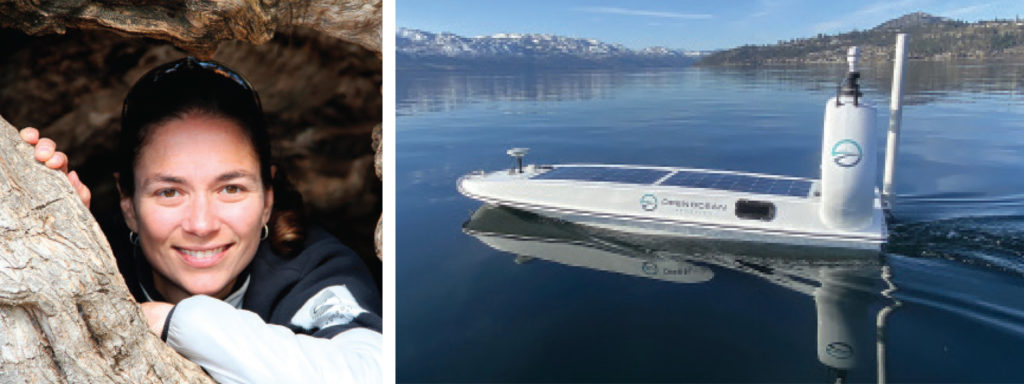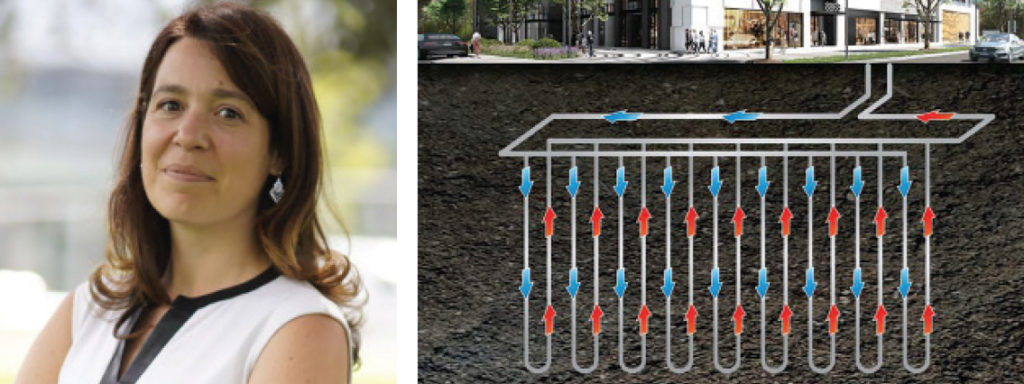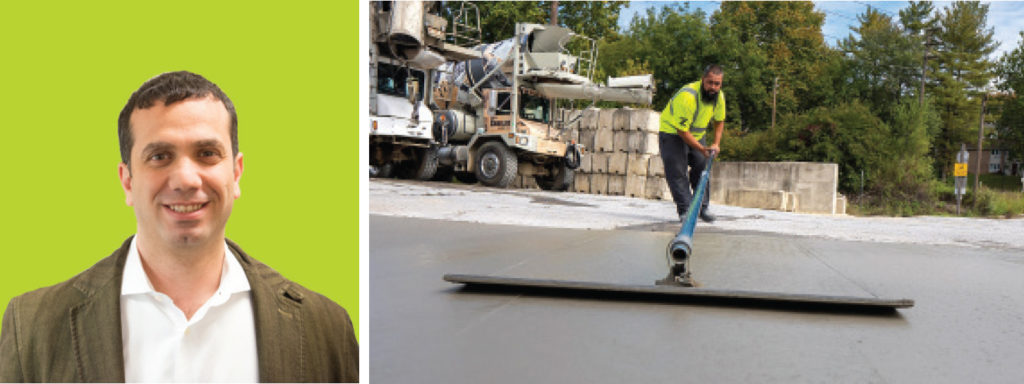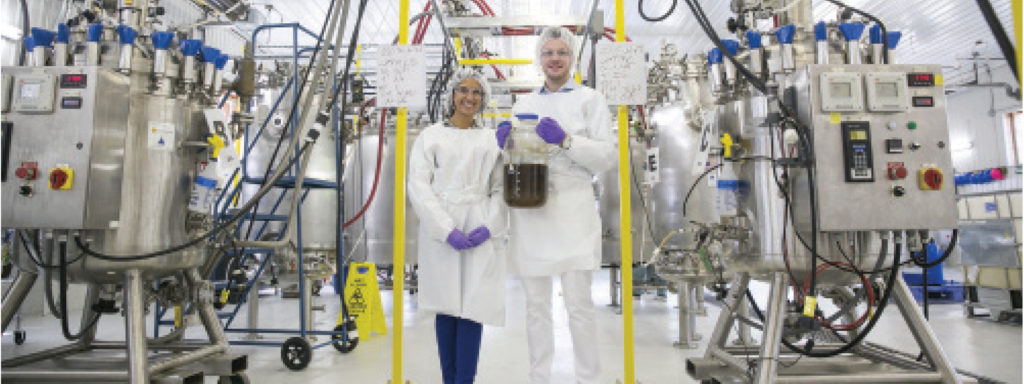10 Profitable Solutions to Protect the Environment

One of the first to envision ecology through the lens of profitability, Bertrand Piccard (above) of Switzerland has always advocated that solving climate change — rather than an expensive problem — is a fantastic market opportunity.
Piccard actively speaks out against the absurdity of the outdated polluting devices and systems we are still using and promotes the benefits of efficient technologies to motivate governments and industries to take action. Here are 10 solutions from the 1,000 he intends to present to decision makers around the world this year.
1. The New Gold Rush: Electronic Waste

Mohamed Khalil – Pyrocycle, Canada
Pyrocycle has developed a novel and green thermochemical process for recycling end-of-life electronic waste. One of the greatest environmental challenges currently facing Canada and many other countries is the management of rapidly growing and highly hazardous electronic waste. According to the United Nations Environment Programme (UNEP), between 20 and 50 million metric tons of e-waste are disposed of globally every year — a number predicted to increase to between 40 and 70 million tons per year over the next 12 months.
“Electronic waste disposal contributes to climate change due to the chemicals released when burned,” says founder Mohamed Khalil. “By adopting a new approach to recycling, we save energy, prevent extraction of raw materials, and help fight climate change.” Khalil attributes the success of Pyrocycle to a diverse management team made up of science-oriented and business-oriented members: Prof. Jamal Chaouki (Polytechnique Montreal — Department of Chemical Engineering), and Sylvain Savard (a businessman, investor and founder of Avianor Group). More than 5 million computers and monitors are thrown away each year by households and businesses in Canada. Pyrocycle’s efficient, non-polluting, and cost-effective technology prevents environmental pollution by recycling. They target telecommunication companies that produce a significant share of electronic waste and replace smelters at traditional waste recycling facilities.
Financial Benefits: Creates value from electronic waste that would otherwise be landfilled and upgrades the waste to create a secondary market of recovered metals and rare earth.
2. Solar-Powered Autonomous Boats that Protect Our Oceans

Julie Angus – Open Ocean Robotics, Canada
Data Xplorer is a solar-powered ocean drone, also known as an uncrewed surface vehicle (USV), that travels our oceans for months at a time collecting ocean and environmental data through its suite of modular sensors. This allows for more affordable, sustainable, and safer ocean data collection. Collecting this data is critical to protecting and understanding the ocean and the profitability of this $2.5 trillion marine industry.
Capable of traveling in coastal waters and on the open sea, and with a customizable platform for multiple sensor integration, it offers the ability to understand our oceans in an entirely new way. “Before starting Data Xplorer, cofounder Colin Angus and I took a big risk and rowed across the Atlantic Ocean using human power alone,” says Julie Angus of her epic journey with her then fiancé. “It was during this five-month expedition that we realized how little we, as people, knew about the ocean and how useful autonomous boats would be if they could float along the ocean 24 hours a day, seven days a week, collecting data nonstop and sharing this with the world — without the use of greenhouse gases. It works as a business because it reduces greenhouse gas emissions and risk to personnel while being more affordable and more efficient than the current market alternative: conventional crewed vessels.”
Financial Benefits: USV market valued at $718 million and growing at 15 percent every year (according to research by Markets & Markets), with key markets such as seafloor mapping, offshore wind patterns, and protection against illegal fishing.
3. Using Earth’s Energy to Heat and Cool Your Building

Cindy Demichel – Celsius Energy, France
Celsius Energy has developed a heating and cooling solution for buildings based on renewable underground energy. The company provides a low-carbon alternative to gas for heating and a low-carbon cooling system based on constant, renewable underground energy — available anywhere. Using this new form of geothermal technology, Celsius Energy reduces the amount of real estate required from the size of a soccer field to the size of five parking spots, while generating the same amount of energy. As the planet warms, demand for air conditioning has increased, and Celsius can meet this need without any adverse environmental demands. Today, 25 percent of worldwide greenhouse gas emissions come from heating buildings, and cooling needs will triple by 2050. “Because climate change is the biggest challenge humankind has faced, marginal improvements are not the answer,” says founder Cindy Demichel. “There is no question that societies will continue to need energy sources; therefore, we also need to establish a new paradigm.”
Financial Benefits: Lowers carbon emissions from building heating systems tenfold and provides sustainable air conditioning using the Earth’s energy — dropping energy bills dramatically and increasing the value of buildings.
4. Start a Factory Anywhere that Makes Products from Plastic Waste

Samantha Snabes – re:3D, United States
Gigabot X makes industrial 3D printers that can print directly from reclaimed plastic pellets. The low-cost, high-quality large-format 3D printers use recycled filament that usually costs 10 times more than the typical plastic feedstock. Gigabot X’s solution makes 3-D printing large objects relatively inexpensive by using shredded recycled materials to produce new items, giving anyone, anywhere an opportunity to manufacture a local solution sustainably. A bonus is that Gigabot X prints materials 17x faster than conventional printers.
Creators, inventors, and social enterprises can print new products, infrastructure, and replacement parts locally with waste — eliminating supply chains. “This solution dramatically lowers costs and barriers to entry, creates jobs, and allows problem-solvers worldwide to address local needs independently,” says cofounder Samantha Snabes.
Financial Benefits: Offers an easy and cost-effective way to begin a social enterprise.
5. Hydrogen Fuel Is Cheaper than Gas

Chris McWhinney – Millennium Reign Energy, United States
“In 1990, I was shown a small electrolyzer in a Jiffy peanut butter jar. It took electricity and water and made hydrogen and oxygen,” recalls MRE Hydrogen Generators founder Chris McWhinney. “This was my first introduction to hydrogen, and I was told the space shuttle used hydrogen to take off. I wondered why we weren’t using hydrogen instead of gasoline?”
MRE Hydrogen Generators allow the efficient generation of hydrogen to create a cost-effective fuel. Hydrogen can be produced with zero carbon footprint and plays two massive roles: creating a new, renewable-energy system and decarbonizing transportation. More than 38 hydrogen stations have been built in California, with the state subsidizing 80 percent of the cost — masking the fact that a financial model does not support long-term deployment of new hydrogen fueling infrastructure. McWhinney wants to increase demand for hydrogen fuel with small, streamlined modular designs.
“My research found that the key would be to reduce the capital cost of the hydrogen equipment and to lower the cost of electricity,” says McWhinney. “With renewables being amortized over a long period, the electricity cost came in line. We developed the electrolyzers to be cost-competitive and can now beat gasoline prices with renewable hydrogen.”
Financial Benefits: Accelerating the hydrogen fueling infrastructure and offering hydrogen fuel at $0.98 per liter (gas equivalent).
6. Sustainable Concrete that Captures CO2

Vahit Atakan – Solidia Technologies, United States
Solidia Cement has developed a low-emission concrete that captures CO2 and reduces precast concrete’s environmental footprint by 70 percent. During the cement manufacturing process, the furnace temperature is reduced through a chemical reaction, and the cement reacts with CO2 — instead of water — to create concrete. This new material hardens in 24 hours instead of 28 days. The low-lime cement and CO2-cured concrete reduce its carbon footprint, and the water used in the process can be reclaimed and recycled. Cement and concrete production methods have been mostly unchanged since the mid-19th century, and the industry still has a significant environmental footprint — especially CO2 emissions and water use.
“To move the needle fast enough on climate challenge, we must engage global industries,” says chief scientist and coinventor Vahit Atakan, Ph.D., who believes they can apply their solution to the global $1.3 trillion concrete and cement markets. Solidia Cement uses the industry’s existing equipment, processes, and raw materials to make the adoption of its solution easier.
“In addition to reducing the carbon footprint of concrete, our product performs better than traditional concrete,” says Atakan. “We’ve demonstrated that we can solve problems beyond sustainability and deliver improved performance too. At that point, sustainability becomes just icing on the cake, and that makes it smart business.”
Financial Benefits: Global demand for cement and concrete is growing fast as more people move to urban areas and new housing and buildings rise; disrupting cement and concrete market for new and profitable avenues.
7. Animal Protein Alternatives to Feed a Hungry World

Adam Noble – Noblegen, Canada
By 2050, the world will need to produce 70 percent more calories to bridge a widening food gap, needing to feed 9.7 billion hungry people each day. Noblemen Protein’s solution to this problem, and reducing carbon emissions, revolves around its understanding of a unique food source — Euglena gracilis, a freshwater species of single-celled alga. The company finds value in natural sources passed over by conventional science.
“This microorganism has so many amazing characteristics,” says founder Adam Noble, “one of which is to grow quickly in vertical fermentation tanks. We can make protein and other food ingredients at a fraction of the environmental cost compared to traditional protein, while positively impacting people’s diets on a global scale.” The resulting vegan protein is affordable and efficient compared to traditional plant and animal protein production.
“The food industry is playing a massive role in climate change, with 26 percent of all human-generated carbon emissions coming from our industry,” says Noble. “If we can contribute to lowering that by even half a percentage, it will be a huge win for us.”
The nutrient-rich, microorganism-based protein has the same protein content and characteristics as traditional animal protein without the costs of livestock feed, livestock, land, transportation, and meat processing facilities. Noblemen Protein mass produces affordable protein by leveraging locally sourced starch, such as corn and cassava.
Financial Benefits: Lab-grown protein produced in an ancient, natural method scaled cost effectively at industrial levels.
8. Vehicle Charging Infrastructure Is the Next Energy Frontier

Dr. Lyubov Artemenko – Go To-U, United States
Go To-U delivers a seamless EV charging experience with a simplicity designed to increase adoption. To meet the 2050 Paris climate commitments, transport has to be decarbonized. Go To-U offers unique reservation features, allowing electric vehicle (EV) drivers to book charging stations in advance. The company is mapping charging stations near retail and hospitality locations, increasing traffic to charging sites, and boosting customer loyalty. “We are driven by the idea of reducing carbon footprints by encouraging the adoption of electric vehicles,” says cofounder and COO Dr. Lyubov Artemenko (above, left), who along with cofounder and CEO Nazar Shymone-Davyda (above, center), and cofounder and CPO Lena Artemenko (above, right) aim to change the face of mobility. “Our software technology enables charge point owners to promote higher traffic to charging locations, enhancing EV drivers’ satisfaction and loyalty.”
Financial Benefits: Tripling the occupancy rate of EV charging stations by making them simpler, faster, and cheaper to use.
9. Shedding Free, Natural Light in Dark Places

Bob Westfall – Solatube, United States
Bob Westfall first patented his tubular daylighting device in Australia in 1986, and it’s taken 34 years for Solatube Tubular to show that non-electric, passive lighting is the future. A tube installed through a roof brings daylight into interior spaces that are inaccessible to skylights and traditional windows, producing natural light wells.
A wall pressure switch adjusts the device’s opening or closing and is a cost-effective, energy-efficient, and eco-friendly way to light a home or office. “The tubular daylight device delivers up to 100% of interior lighting needs with sunlight and can reduce carbon footprints across all sectors — manufacturing, retail, warehousing, education, agriculture, and government,” says Westfall. The installation pays back in less than four years, and the device can save up to 37,000 kWh.
Financial Benefits: Significant reductions in energy consumption; reduces heat that builds up inside and eliminates the cost of energy needed by HVAC systems to cool interiors; qualifies for a federal tax credit.
10. Replacing Fossilized Dinosaurs with Infrared Film for Heating

Donna Hunt – NexGen Futures, United Kingdom
The reliance on coal, oil, and gas for heating homes, buildings, and industrial processes releases carbon dioxide and other greenhouse gases into the atmosphere, contributing to climate change. Now, an ultra-thin, flexible heating film produced by NexGen — situated 60 miles West of London — can be installed on walls, ceilings, and floors to help solve this problem. A low-carbon, energy-efficient, waterproof, Infrared heating film delivers quiet, clean, healthy heating of homes and buildings. The ultra-thin, flexible heating film can be cut to accommodate lights, switches, and plug sockets and is powered by renewable energy or AC/DC low-voltage transformers to heat the fabric of a building and its occupants.
“Our business invested in an emerging, highly disruptive technology that directly targets decarbonization, so influencing future climate change wasn’t a goal — it was a promise,” says founder Donna Hunt. “From a business perspective, the technology aligned perfectly with a stated governmental policy on the decarbonization of domestic heating and industrial infrastructure. We are carbon-free and energy-neutral over an annual cycle by fusing clean solar energy, battery storage buffering, and the unique elements of infrared heating. It’s a virtuous circle,” says Hunt.
Financial Benefits: Fifty-seven percent less energy needed to heat an average UK home compared to fossil fuel gas heating. Fifty-six percent less power used compared to electric wire mat systems.





Responses